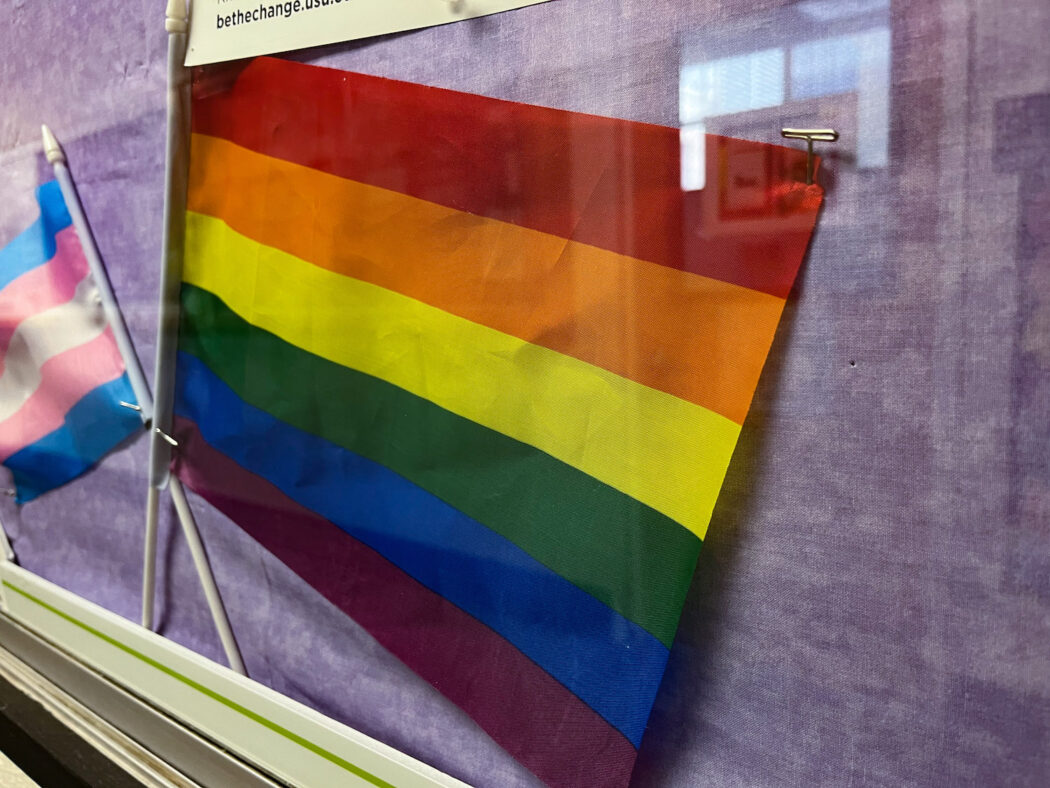Logan School District to start implementing new pride flag policy
After a four-month-long debate on pride flags in classrooms, Logan City School District’s updated policy on symbols in classrooms came into effect on March 3, the final date of the state legislative session.
On Dec. 13, the district board members voted on a 3-2 decision to revise the district’s Standards for Media Use policy to support Utah state code which says any classroom materials “do not display materials that endorse, promote, or disparage a particular political, personal, religious, denominational, sectarian, agnostic, or atheist belief or viewpoint.”
The new district policy does not require a principal to remove personal items from a teacher’s desk — including pride flags — as long as they “do not disturb the learning process.”
Before the district enforces any changes, Superintendent Frank Schofield and the district’s five other board members plan to offer training to administrators on how to implement the policy in unique situations. The administrators will then train their own staff, according to Shana Longhurst, the district’s director of communications and public relations.
“We know there are going to be a lot of novel situations that are going to come up just because of the complexity of the issue,” Schofield said.
Frank Stewart, the board’s vice president, said the policy and training will help teachers better know the answers and processes for student and parent concerns.
“We just want every teacher to have and feel like they have the backing of our administration in every circumstance so that they have answers when a parent comes to address on specifically about their student or their child — that there’s a good process in place to make sure that we consider all the options on ways that we can best help them,” Stewart said.
Board member Larry Williams agreed.
“We want to minimize putting the teacher on the spot,” Williams said. “And that’s why there’s going to be a building administrator principal involved in determining what’s appropriate.”
Schofield noted that the board has delayed putting their training together to take any legislation into account, specifically relating to neutrality in classrooms.
The policy states that, “Materials that do not convey the District’s educational message or are determined by the building principal to be in violation of the guidance in this policy, may be removed by the school principal. An educator or other employee who uses instructional time or space to convey a political, religious, or personal message after being directed not to may be subject to disciplinary action.”
However, Longhurst explained that the policy “does not require anyone to remove anything from their classroom, unless it violates the policy. Nothing needs to be removed at this point and will not need to be based on the implementation of this policy.”
Andrea Sinfield, a Hillcrest Elementary School parent who kickstarted the conversation about classroom symbols during a September school board meeting, expressed frustration with the current policy and said feels like nothing has changed in regards to pride flags in classrooms.
“It’s a little disheartening to me because of all the work that (we) have done to try to create a neutral classroom, because that’s what it is,” Sinfield said.
Jay Bates Domenech, a senior at Logan High School and president of the school’s Gay Straight Alliance (GSA) agreed that there hasn’t been too much of a change after the debate and policy implementation.
“The only change I’ve really seen is actually an influx of teachers putting up pride flags,” Domenech said.
However, Domenech did express a concern that after the administrator training, their principal may be more strict with implementing the policy than other schools in the district.
“I think (the implementation) is just going to make it a more hostile environment. We already don’t have a super amazing, supportive school — and that goes for a lot of things, like not only queerness but also like people of color and undocumented people, etc. But like, I just think it’s going to increase the kind of otherness of queer students,” Domenech said.
Sinfield suggested that the Logan City school district could implement a policy similar to the Cache County school district, referencing a picture of a flier outside a Green Canyon high school classroom.
The flier pictured several students — including a student in a wheelchair, students of color, and another wearing a rainbow shirt — with the words, “Safe, Welcome, Invited. Our school is a safe place where everyone belongs. Come, learn with us” underneath the picture.
Schofield said that there hasn’t been a discussion with the board yet on creating a similar district-wide symbol for inclusion.
“As we have the conversation of ways to communicate inclusion for all students, one of our board’s commitments is to do that in a way that doesn’t inadvertently send a message of exclusion for groups that identify with a particular symbol,” Schofield said. “We haven’t finalized anything because our board is extremely aware these images have strong emotional impacts on students and their families.”
Stewart noted that the board and district’s decisions centered on trying to help everyone feel included.
“It really is our hope that we can continue to do everything we can to help students feel accepted in every capacity,” Stewart said.
-Jenny.Carpenter@usu.edu
Photo by Kate Smith

